Many of us drive to work each day, or even go on road trips out of town for a weekend getaway. For some, the trek can be longer than others, and unexpected delays and traffic can prevent us from getting where we need to be. Unfortunately, this means that we could be sitting in our car for long periods of time.
While sitting in a car (especially if you have an old school sports car with bucket seats!) is different than sitting at a desk, you still want to have great posture – but are we usually aware of our posture when we drive?
What is Good Driving Posture?
What does good driving posture look like? Generally, it means that we can draw a straight line through the ear canal, shoulder joint, chest, pelvis, and hips. When sitting in the car, the head should be in a neutral position. The back of the shoulders and lower back should touch the seat, and the back of the head should be lined up with the middle of the headrest. There should also be a slight bend in the arms when gripping the steering wheel, and a slight bend in the legs. Find a more detailed guide about adjusting your car to help with driving posture here.
Here is an example of good driving posture:
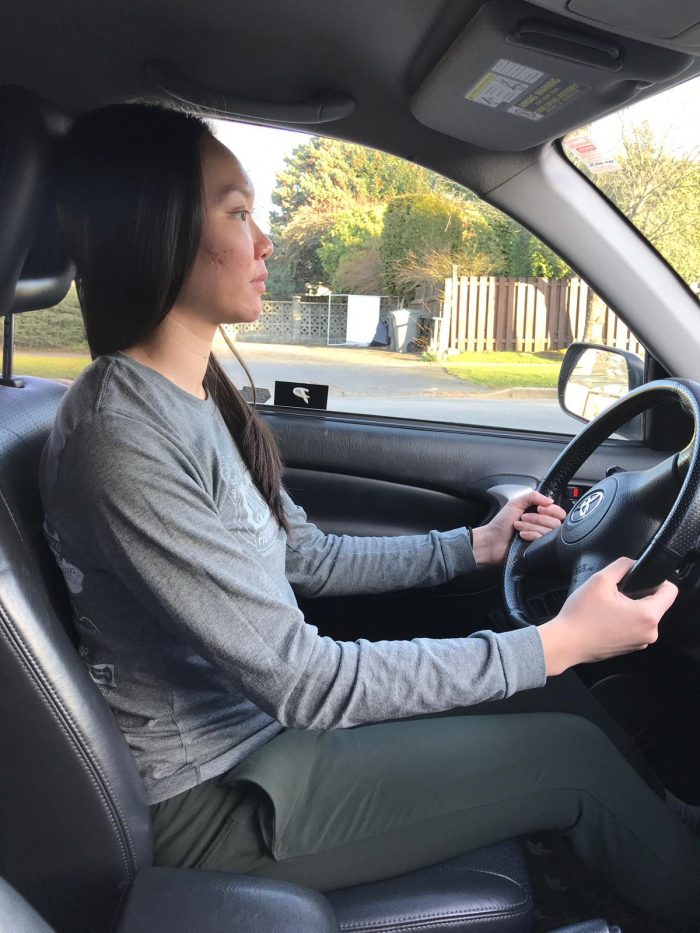
Alternatively, here is an example of poor driving posture: the neck is leaning forward, shoulders, and upper and lower back are rounded, pelvis is slouched, with too much bend in the arms and legs.

What Does Poor Posture Do?
Driving with poor posture affects several parts of the body including the hip flexors, gluteal, back, and neck muscles. Your body tries to compensate by lengthening these muscles to keep you upright. Over time, overworked and tight muscles make them harder to activate. This can lead to poor body alignment and posture.
Strengthening or stretching these muscles allow you to maintain good driving posture, and counteracts the tightness felt in a seated position. They also help with proper pelvic and spinal alignment, which prevents soreness or pain in problem areas such as the lower back and neck.
Go through these exercises 2-3 times. Even if you are pressed for time, taking 5-10 minutes to cycle through these exercises once each day can still make a difference!
Exercise 1: Bird Dog
- This exercise focuses on engaging your core and back muscles
- Throughout this exercise, focus on tucking your abdominals into your spine to engage your core
- Starting position: begin on all fours with your hands directly under your shoulders and knees under your hips
- Keeping your back and pelvis stable and in a straight line, reach your left arm forward and right leg back
- Return to the starting position and repeat on the other side to complete 1 repetition
- Repeat for 10 repetitions
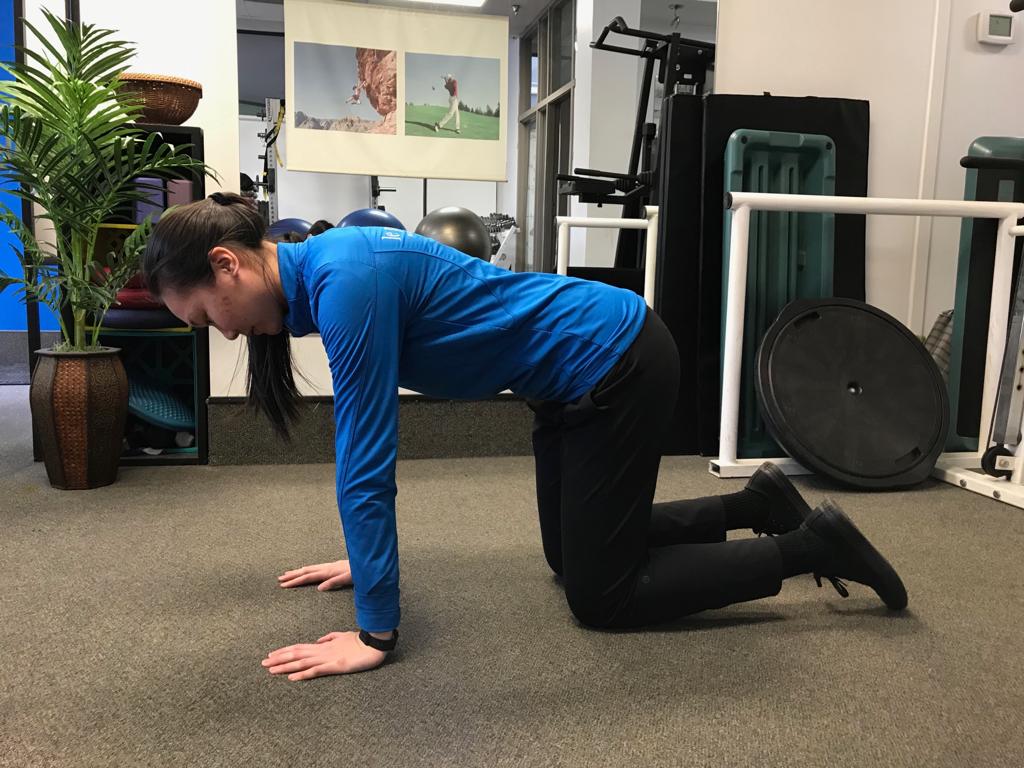
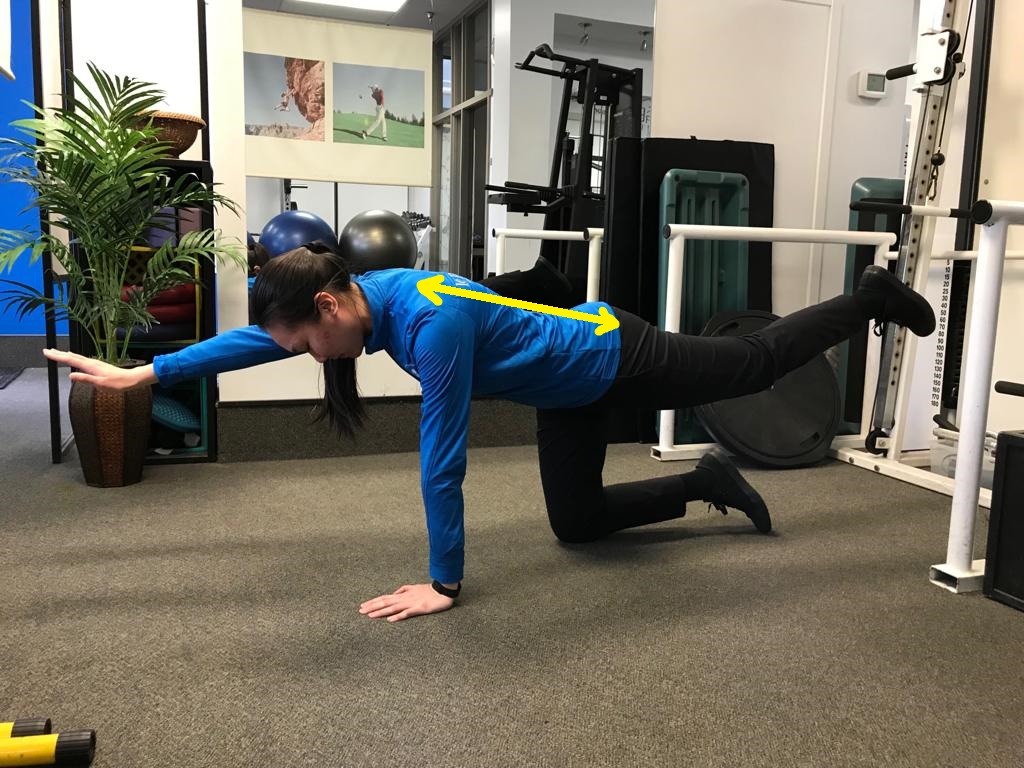
Exercise 2: Hip Flexor Stretch
- In a lunged position: kneel with your left knee on the floor and right leg at a 90 degree angle in front of you
- Extend both your arms and place both hands on your right knee. This is so you can push down onto your knee and engage your core to stabilize your pelvis
- Keeping your back straight and squeezing your gluteal muscles slightly, slowly lean forward until you feel a stretch in the front of your right hip. Hold this position for 5 seconds
- Return to the lunged position and repeat on the other side
- Repeat for 8 repetitions on each side
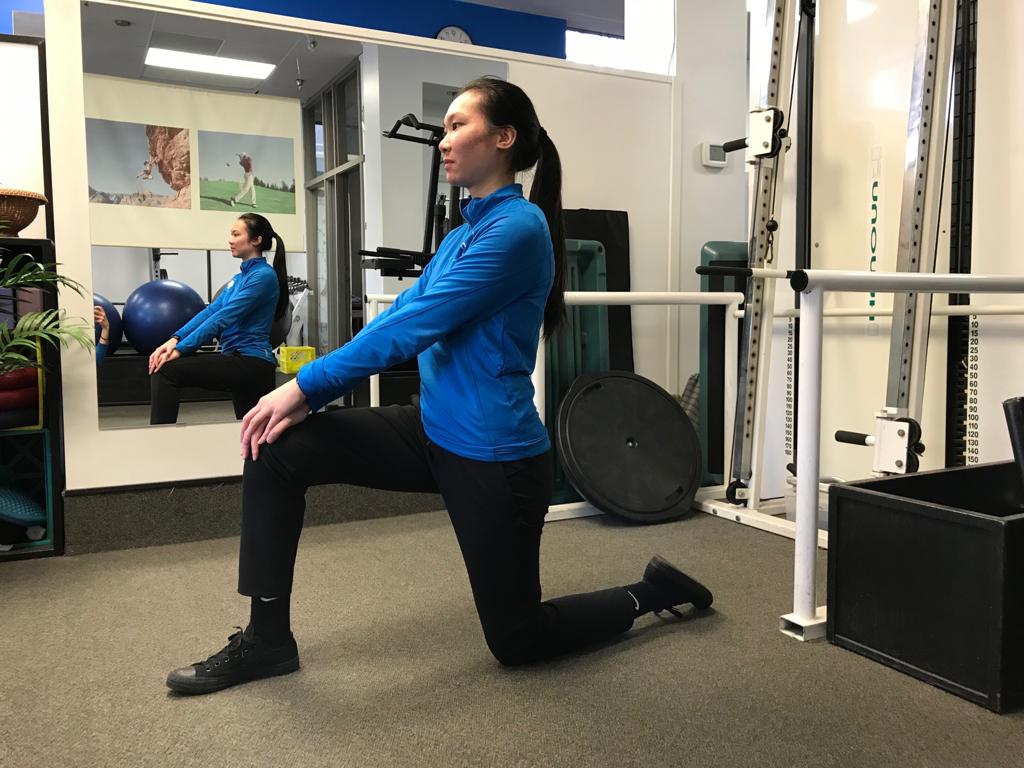
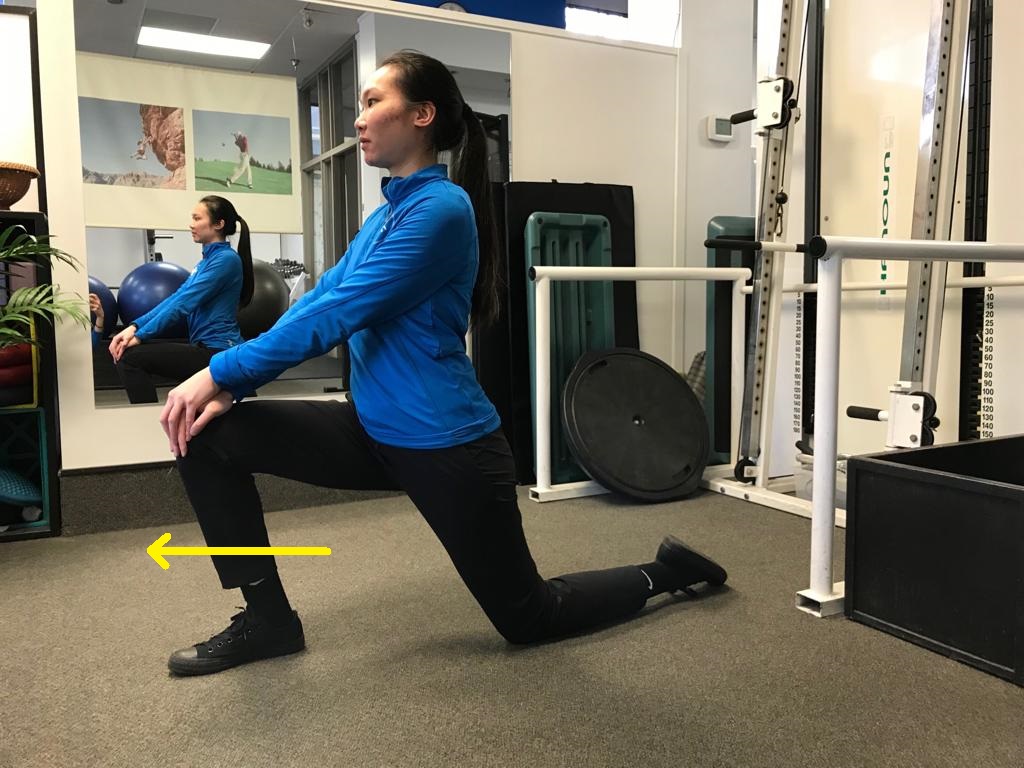
Exercise 3: Incline Push-ups
- This exercise works on your pectoral, or chest, muscles while also keeping your core and back stabilized
- Stand facing a bench or an elevated platform (make sure it’s sturdy and safe to put weight on)
- Position your forefoot back from the bench or elevated platform with the body and arms straight
- Your arms should be perpendicular (90 degree) to your body
- Keeping your body straight, lower your chest onto the edge of the bench or sturdy platform by bending your arms. Remember to tuck in your abs to engage your core
- Push your body up using your arms until they are fully extended to complete the repetition
- Repeat for 12 repetitions
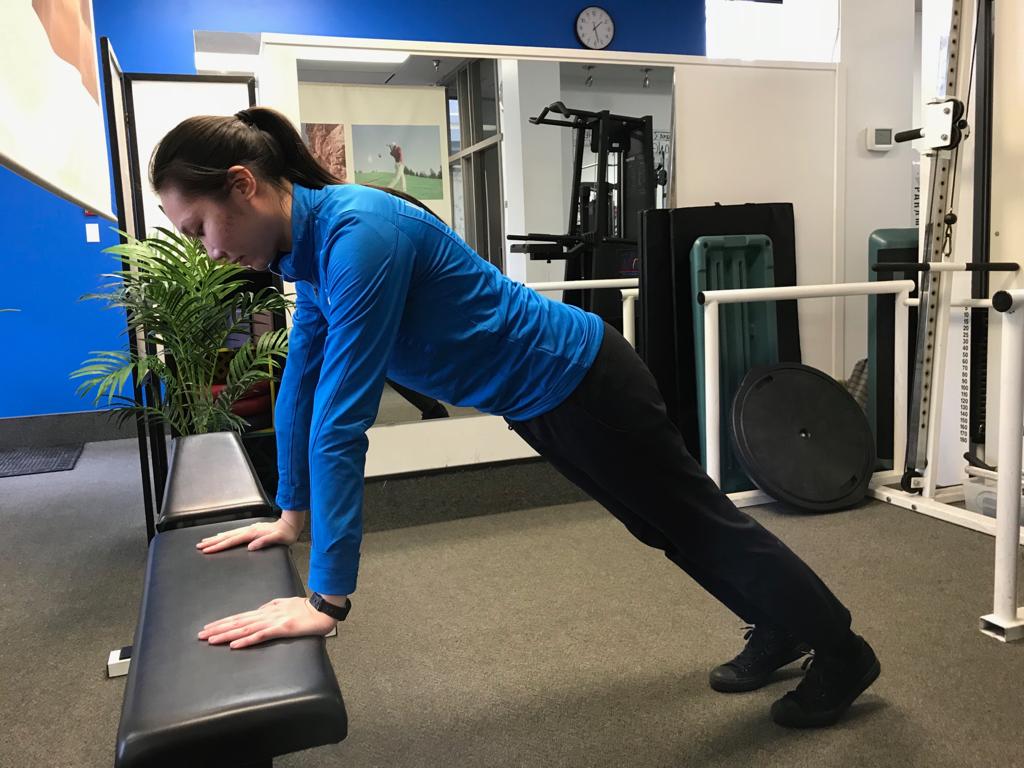
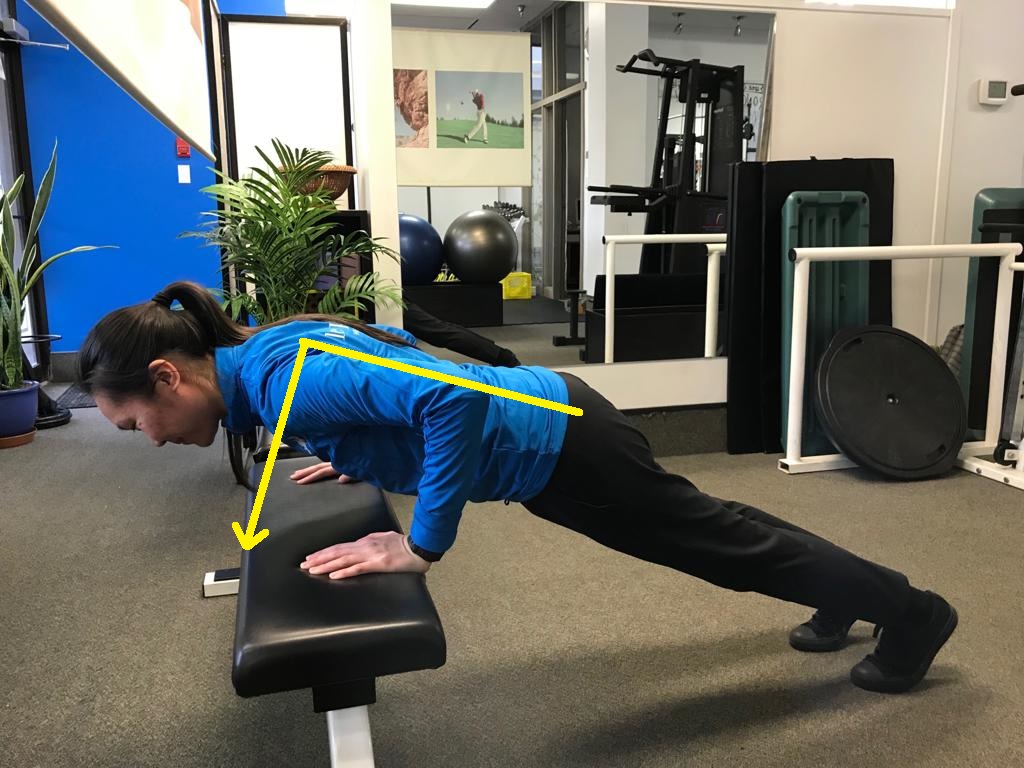
Exercise 4: Glute Bridge
- This exercise is great for working on the gluteal muscles while engaging the core
- Starting position: lay on your back, with your knees flexed slightly over 90 deg. and spread a few inches apart, and feet flat on the ground
- Contract your gluteal muscles to lift your hips off the ground
- Focus on engaging your core (think: tucking in your abdominalss) and keeping your back straight throughout the exercise
- Return to the starting position and repeat for 10 repetitions
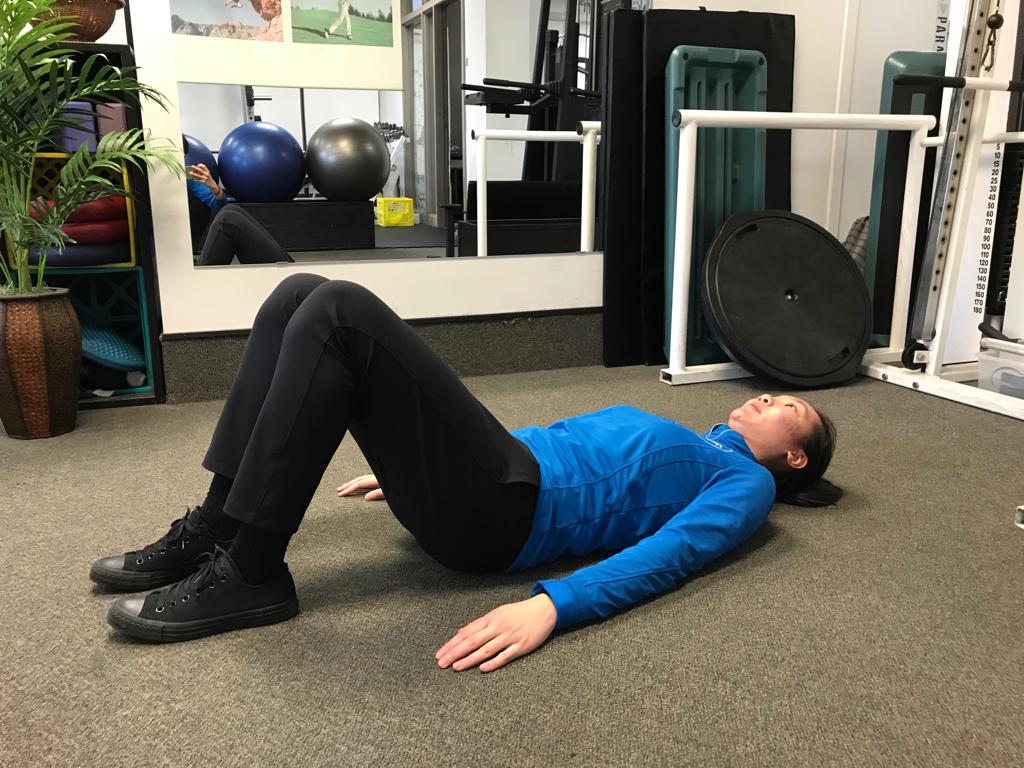
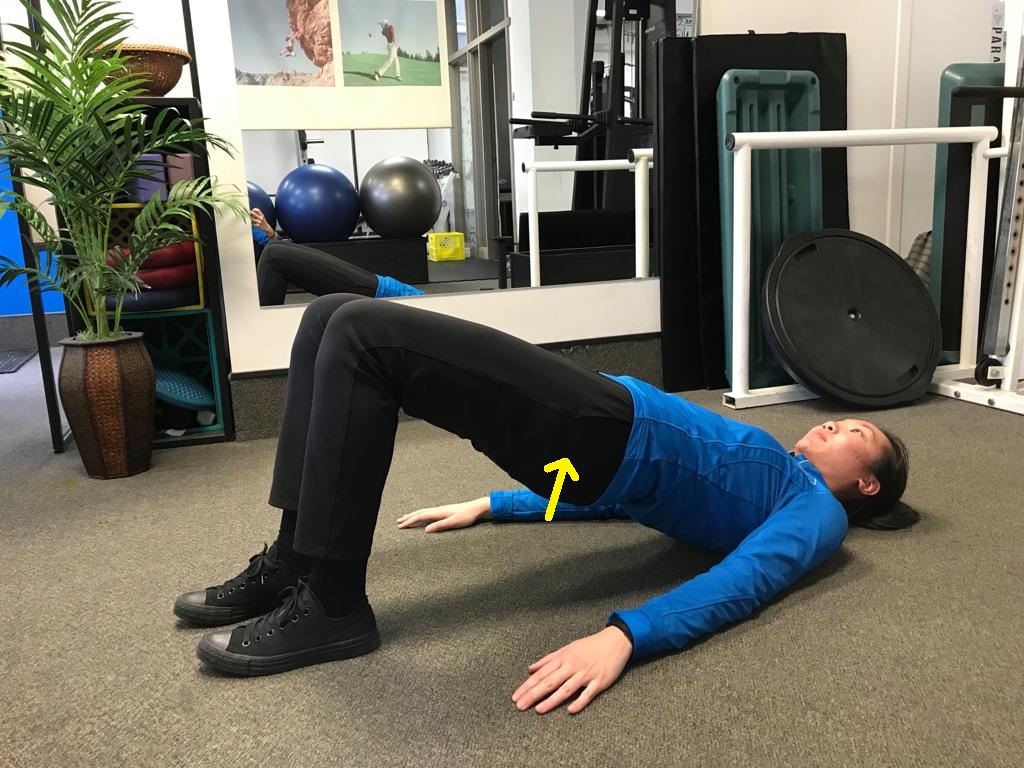
Exercise 5: Neck Stretches
Keep your back straight and head in a neutral position facing forward for the following neck stretches!
Stretching my neck makes me super happy (as you can tell from this photo)!
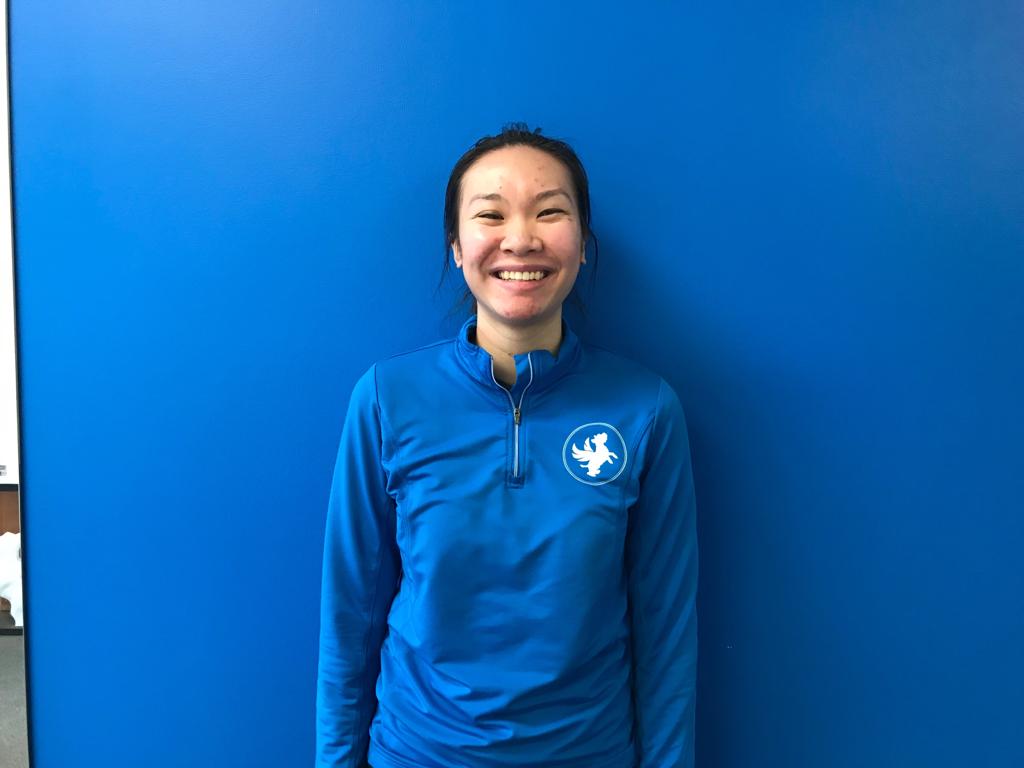
Side-to-Side:
- This exercise can be done standing or sitting: keep your back straight and head in a neutral position facing forward
- Turn your head 90 degrees to the right and hold for 5 seconds
- Return to a neutral head position
- Repeat on the other side
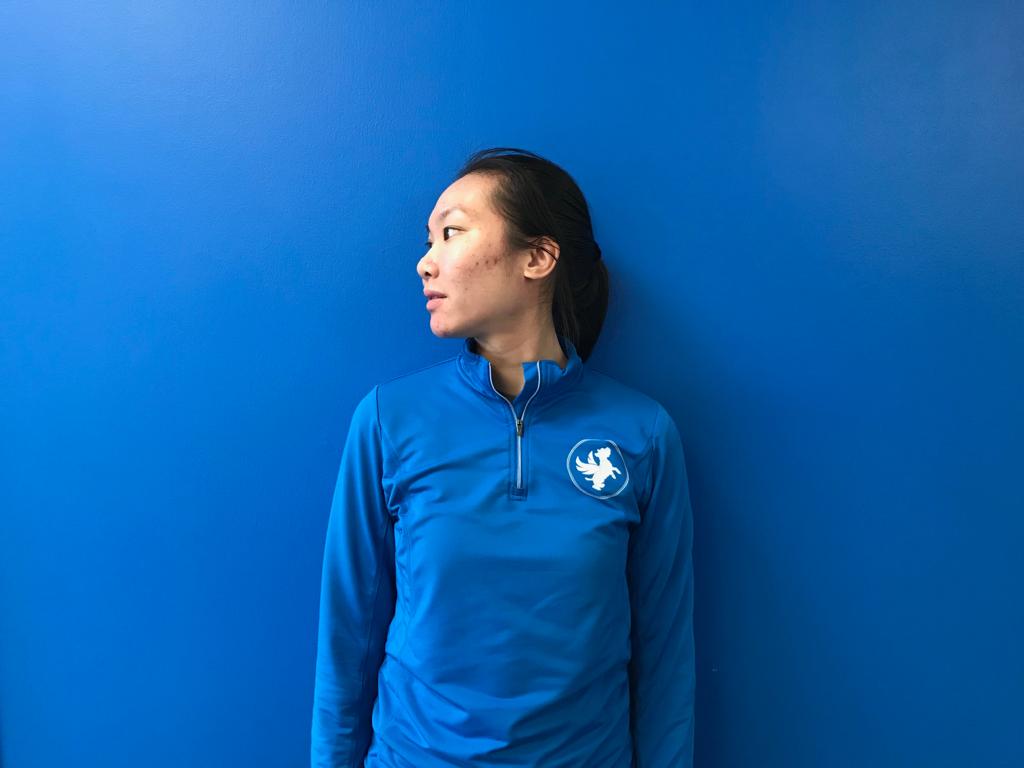
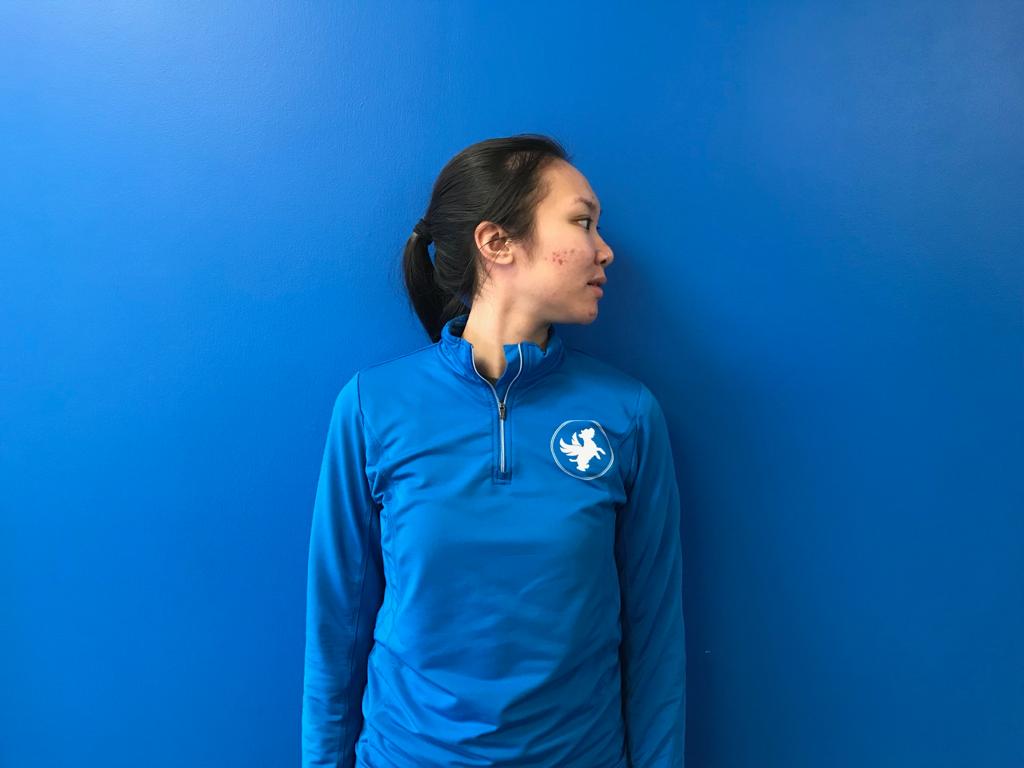
Ear-to-Shoulder:
- This exercise can also be done standing or sitting: again, keep your back straight and head in a neutral position facing forward
- Tilt your head towards the right and hold for 5 seconds
- Return to a neutral head position
- Repeat on the other side

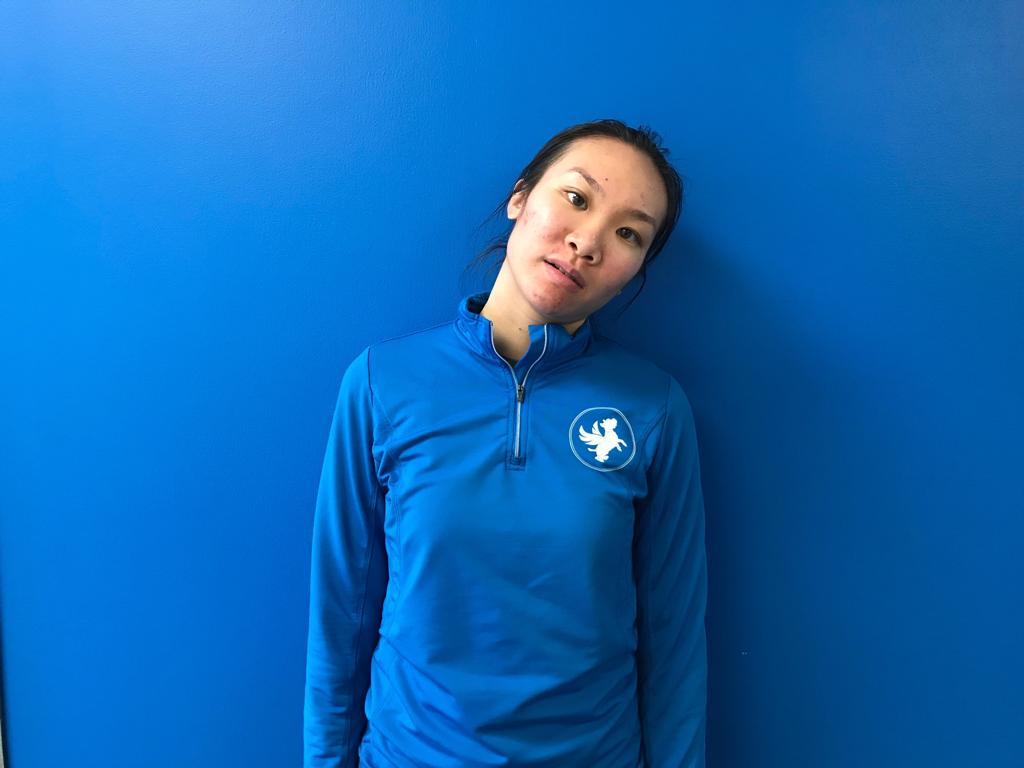
Chin Nods:
- Leaning against a wall, keep your back straight with your feet shoulder-width apart and positioned slightly away from the wall
- Keep the back of your head touching the wall and nod down (similar to nodding ‘yes’). Do not push your head into the wall
- Hold for 2-5 seconds and return to a neutral head position
- Repeat for 10 repetitions
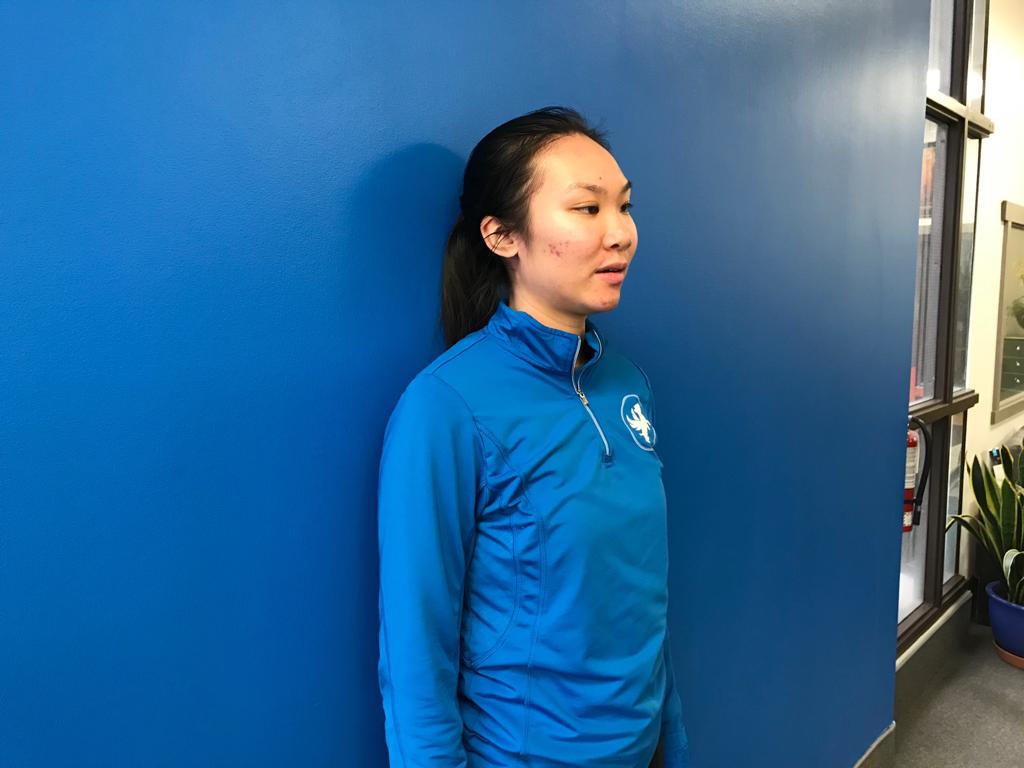
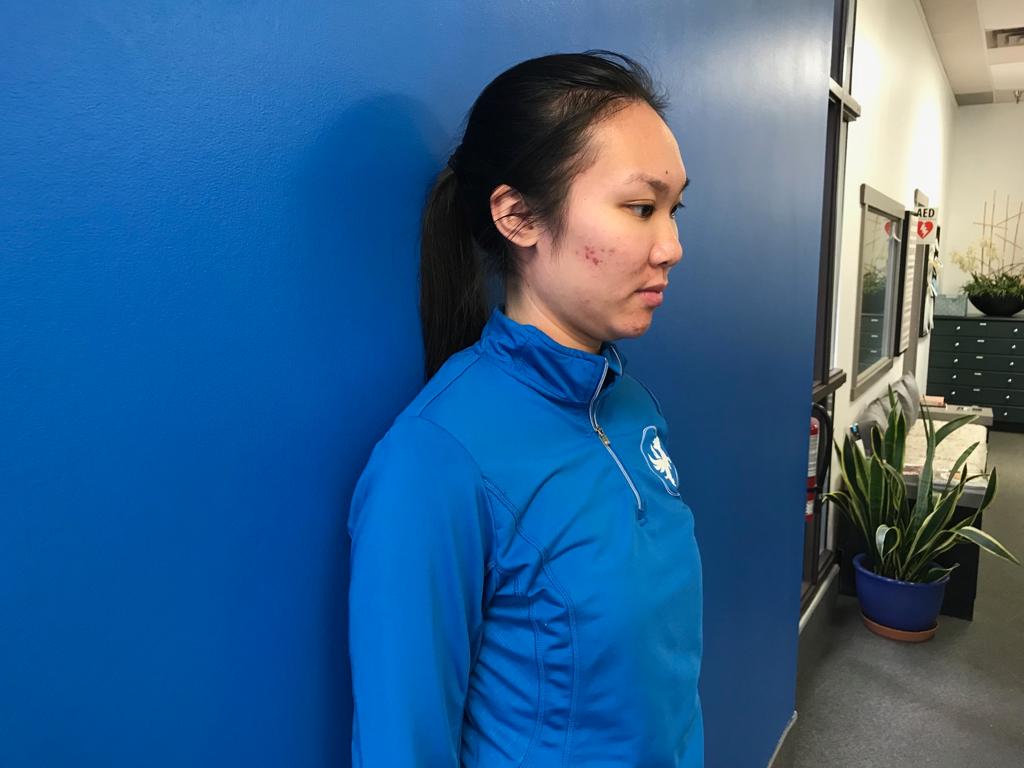
If driving for long periods of time, be sure to take breaks. When I go on longer drives, I like to pull over and park (safely), walk around, and stretch. Additionally, I park further away from my destination so I can walk more, and help stretch out my body.

May Guan – Client Care Manager/Cardio Trainer
May developed her passion for fitness from participating in multiple sports at a young age – eventually finding her love for both playing and coaching volleyball. She is also an avid hiker and distance runner, and is always in search of a new challenge. May believes in fostering a fun, inclusive, and supportive environment where people can achieve their health-related goals.







